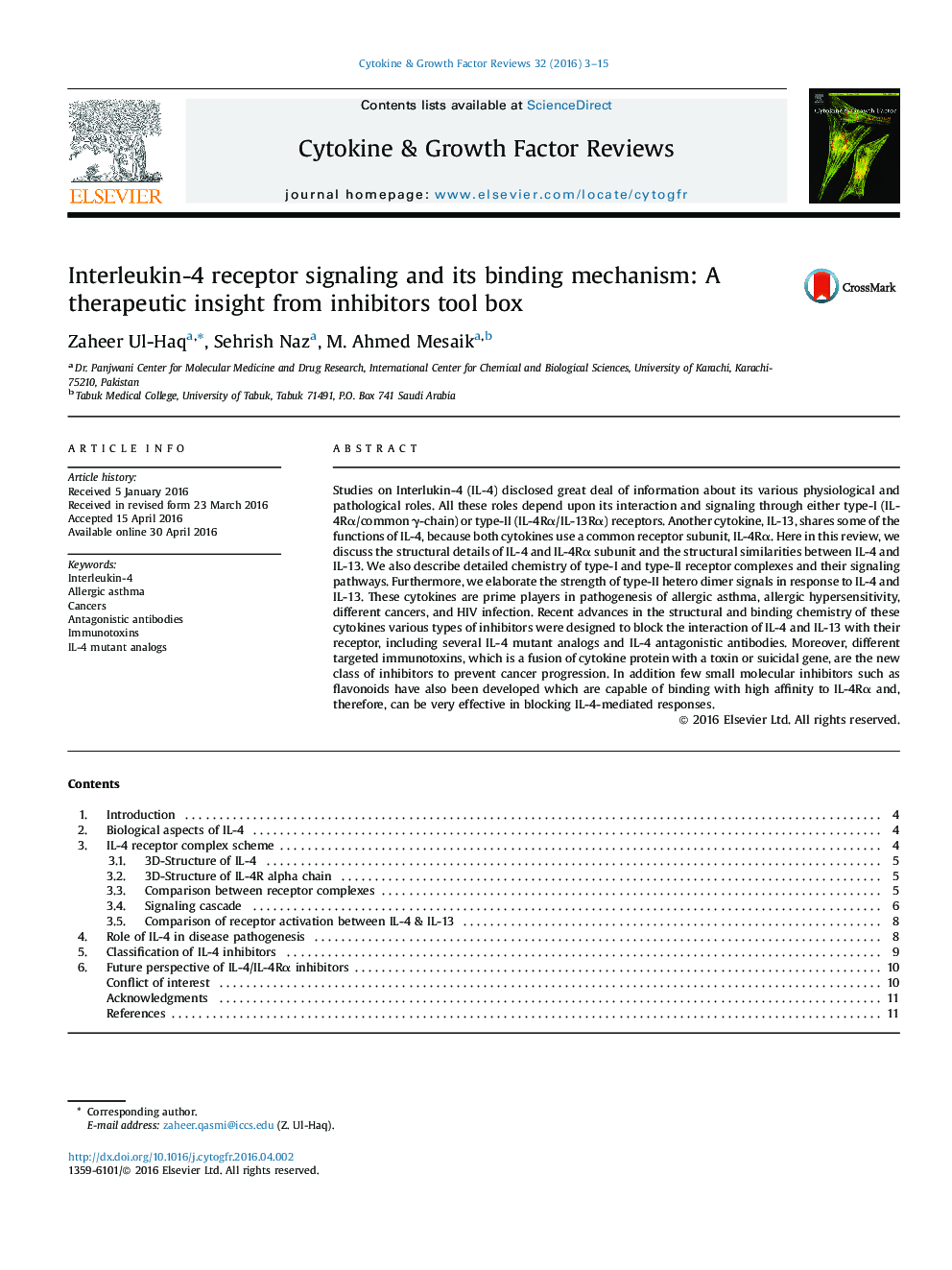| کد مقاله | کد نشریه | سال انتشار | مقاله انگلیسی | نسخه تمام متن |
|---|---|---|---|---|
| 5531214 | 1549492 | 2016 | 13 صفحه PDF | دانلود رایگان |
- Interleukin-4 is the prime anti-inflammatory cytokine involved in cell proliferation, gene expression and apoptosis.
- α chain of IL-4R is also a fundamental part of IL-13R hence, signifying its role in both IL-4 and IL-13 signaling pathway.
- IL-4/IL-4Rα interface persists a charge complementarity which develop polar contacts between crucial residues of both.
- Enhance expression of IL-4/IL-4Rα plays significant role in progression of allergic, malignant, and viral diseases.
- Various IL-4/IL-4Rα modulators have been designed but all of these exhibit several pharmacological problems.
Studies on Interlukin-4 (IL-4) disclosed great deal of information about its various physiological and pathological roles. All these roles depend upon its interaction and signaling through either type-I (IL-4Rα/common γ-chain) or type-II (IL-4Rα/IL-13Rα) receptors. Another cytokine, IL-13, shares some of the functions of IL-4, because both cytokines use a common receptor subunit, IL-4Rα. Here in this review, we discuss the structural details of IL-4 and IL-4Rα subunit and the structural similarities between IL-4 and IL-13. We also describe detailed chemistry of type-I and type-II receptor complexes and their signaling pathways. Furthermore, we elaborate the strength of type-II hetero dimer signals in response to IL-4 and IL-13. These cytokines are prime players in pathogenesis of allergic asthma, allergic hypersensitivity, different cancers, and HIV infection. Recent advances in the structural and binding chemistry of these cytokines various types of inhibitors were designed to block the interaction of IL-4 and IL-13 with their receptor, including several IL-4 mutant analogs and IL-4 antagonistic antibodies. Moreover, different targeted immunotoxins, which is a fusion of cytokine protein with a toxin or suicidal gene, are the new class of inhibitors to prevent cancer progression. In addition few small molecular inhibitors such as flavonoids have also been developed which are capable of binding with high affinity to IL-4Rα and, therefore, can be very effective in blocking IL-4-mediated responses.
164
Journal: Cytokine & Growth Factor Reviews - Volume 32, December 2016, Pages 3-15
